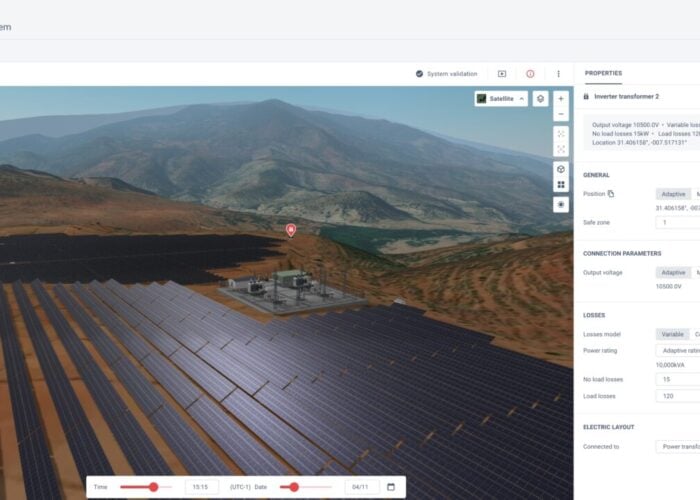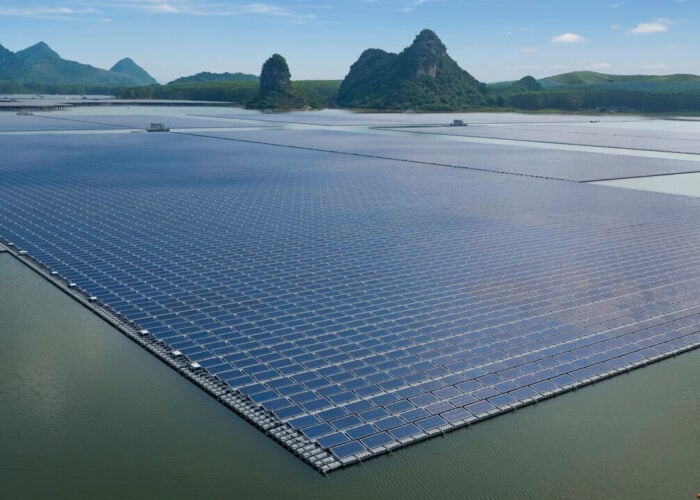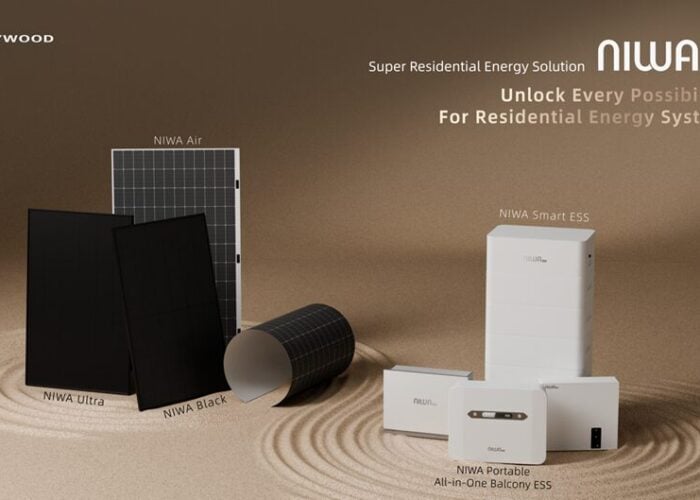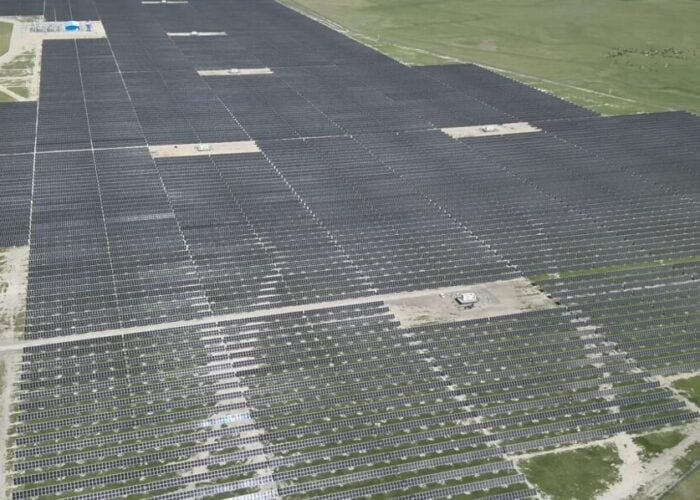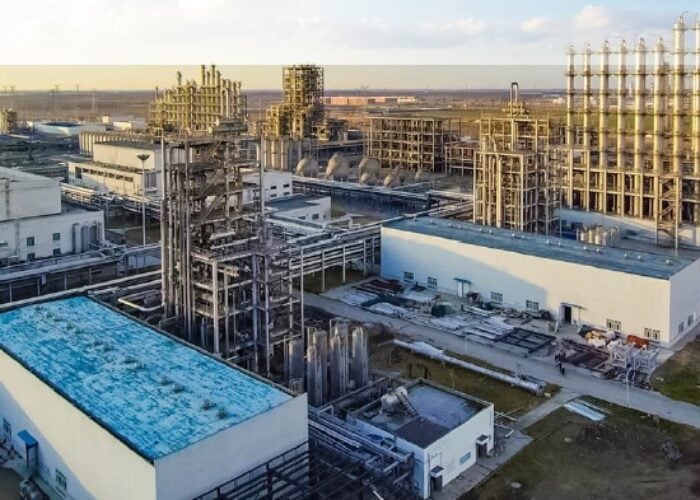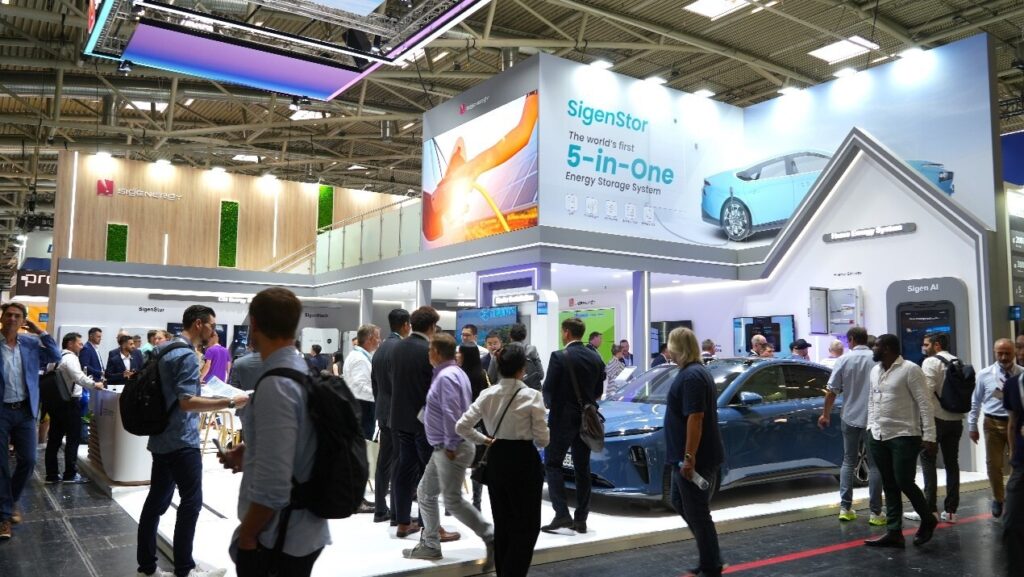
As the proportion of renewable energy generated, particularly solar power, continues to increase in the total power supply, the stability of the grid faces significant challenges. Virtual Power Plants (VPPs) have emerged as a novel energy management solution, offering an effective means to address the various related issues.
A VPP is not a physical grid but a system that aggregates, controls and dispatches various distributed energy resources (DERs) through sophisticated software to enhance energy supply stability, balance grid loads and reduce the risk of power outages.
Unlock unlimited access for 12 whole months of distinctive global analysis
Photovoltaics International is now included.
- Regular insight and analysis of the industry’s biggest developments
- In-depth interviews with the industry’s leading figures
- Unlimited digital access to the PV Tech Power journal catalogue
- Unlimited digital access to the Photovoltaics International journal catalogue
- Access to more than 1,000 technical papers
- Discounts on Solar Media’s portfolio of events, in-person and virtual
In recent years, VPPs have become a growing trend among residential and commercial & industrial (C&I) users, with countries including those in Europe, Australia, the US and Japan seeing their widespread adoption. For energy storage system users, integrating with a VPP to participate in grid dispatch and earn revenue has become an important consideration when selecting a system, resulting in many energy storage manufacturers investing heavily in both hardware and software to ensure their products support VPP functionality.
VPPs for residential and C&I users
After installing an energy storage system, users can sign an agreement with a VPP platform, allowing the platform to monitor and manage their storage devices. By participating in grid dispatch through the VPP, users can earn income. The principle behind earning revenue from VPP participation is straightforward: with the user’s consent, the VPP platform aggregates scattered storage systems under unified management. The platform then compensates users based on the capacity and frequency of storage device usage.
While the concept of a VPP may seem simple, its implementation involves multiple capabilities and demands a high level of integrated hardware and software expertise from manufacturers. It requires advanced coordination control, information communication and intelligent metering technologies to handle various power parameters and algorithms within the power system.
Sigenergy Cloud: Leading the future of energy management
Leveraging industry-leading research and development capabilities, Sigenergy has independently developed the Sigenergy Cloud platform, Sigen Cloud. This platform, which integrates cutting-edge cloud-native technology with an edge-cloud architecture, is a benchmark for intelligent management in the industry.
In anticipation of the future need to connect billions of energy storage devices, Sigen Cloud has built a unified platform for management, operations, dispatch and computational storage through cloud-native technology. The platform’s high flexibility and distributed advantages allow for rapid deployment, on-demand scaling and high-reliability redundancy, making it the core brain of the new power system.
The Sigen Cloud architecture seamlessly connects devices (End), edge computing nodes (Edge), and the cloud platform (Cloud) through unified system modelling, creating a complete digital twin model. With the support of technologies like Docker and GraalVM, cloud applications and services can be rapidly deployed to edge nodes, ensuring quick response times and local data security, further extending the capabilities of cloud computing.
Sigen Cloud also integrates artificial intelligence (AI) technology, embedding deep learning algorithms across all levels of the end-edge-cloud architecture, from data collection to intelligent analysis, fully supporting AI applications. By combining cloud-based training with edge-based inference, AI becomes a core component of the system, continuously evolving as data accumulates and algorithms iterate, enhancing the platform’s intelligence.
The application of AI not only improves the VPP system’s forecasting and dispatch capabilities but also significantly enhances grid stability and security. Sigen Cloud is dedicated to providing users and grid operators with unprecedented efficiency and secure energy management solutions.
Sigenergy’s VPP Programs
Leading the industry, Sigenergy has partnered with leading VPP providers in many countries, offering users fast and reliable VPP services, ensuring grid stability and helping users earn additional revenue. Sigenergy supports multiple VPP connection methods.
Local EMS device connection
SigenStor can directly communicate with local VPP equipment, which then connects to the VPP provider’s cloud platform. As the world’s first five-in-one highly integrated solar-storage-charging device, the SigenStor system comes with a built-in Energy Management System (EMS). It can communicate rapidly with local VPP controllers and, through intelligent dispatch algorithms, respond to grid demands within milliseconds. This advanced control technology includes predictive analytics, demand response algorithms and optimisation models, allowing the system to adjust energy output in real time, ensuring grid stability and reliability.
The EMS-inside feature is particularly advantageous in multi-parallel scenarios. In such cases, SigenStor does not require an additional data logger; instead, it uses Fast Ethernet (FE) for high-speed communication between devices, achieving speeds of up to 100 Mbps. In contrast, other solutions typically use extra data logger devices or home energy management equipment, with inverters communicating via traditional RS485 protocols, which have a standard communication speed of just 9600 bps—only 1/10,000th of FE’s speed.
In Europe, Sigenergy has partnered with CheckWatt, Sweden’s largest VPP provider, to use local EMS device connections to integrate with the VPP platform. In Sweden, it has become a trend for residential storage users to participate in VPPs, and connecting to VPPs for frequency regulation and dispatch offers substantial economic benefits, with a return on investment estimated at two to three years.
In a test conducted by CheckWatt, SigenStor demonstrated the ability to ramp up its discharge power from 0-8kW within three seconds, significantly outperforming the industry standard of 7.5 seconds. This rapid response capability is crucial for maintaining grid balance and preventing power supply interruptions. In fact, SigenStor’s performance could be even faster.
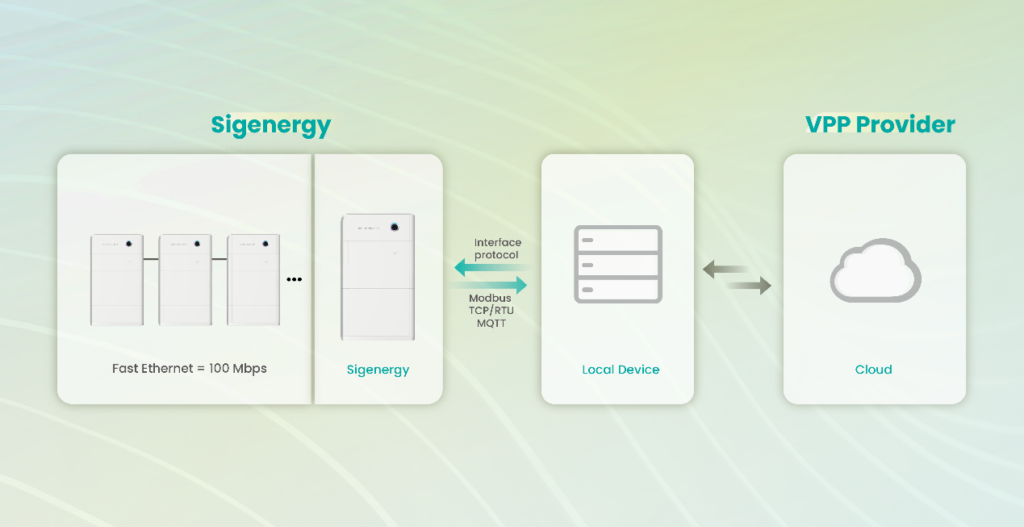
Cloud-to-cloud connection
In this setup, the manufacturer’s cloud platform provides an API interface for seamless integration with the VPP platform. In Australia, this cloud-to-cloud approach is the industry standard. Sigenergy has successfully integrated with several leading VPP platforms in the country, including Evergen, the largest VPP provider, as well as FutureX, energyX and others.
Compared to other solutions, when connecting a large number of storage systems to a VPP cloud platform via the cloud, SigenStor’s advantages become more apparent. Its advanced cloud-native architecture significantly enhances system flexibility and scalability. The modular design of the cloud platform allows it to support up to 2,000 stations responding simultaneously within one second, maintaining high system responsiveness even under large-scale deployments.
Additionally, the cloud platform features intelligent task scheduling and priority management, effectively preventing command conflicts during multitasking and ensuring that critical operations are prioritised, which is crucial for power dispatch and grid stability.
In contrast, other solutions often rely on external data loggers, with multiple devices typically configured in RS485 half-duplex mode, where data can only be sent in one direction at a time, greatly reducing efficiency.
Furthermore, Sigenergy boasts an industry-leading intelligent metering system that can collect and analyse users’ energy production and consumption data in real-time, providing accurate energy usage information to the VPP platform. This data not only helps optimise energy dispatch but also enables users to better manage their energy resources, maximising their economic benefits.
Sigenergy’s metering system, developed in accordance with international standards, can be seamlessly integrated into various VPP platforms, ensuring data accuracy and interoperability.
In different market environments, Sigenergy can quickly adapt to local legal and regulatory requirements, deploying and expanding its VPP solutions globally at a rapid pace. For instance, after obtaining certification under the US IEEE2030.5 standard, Sigenergy completed certification under the Australian IEEE2030.5 standard in just 30 working days, covering the entire development, testing and validation process.
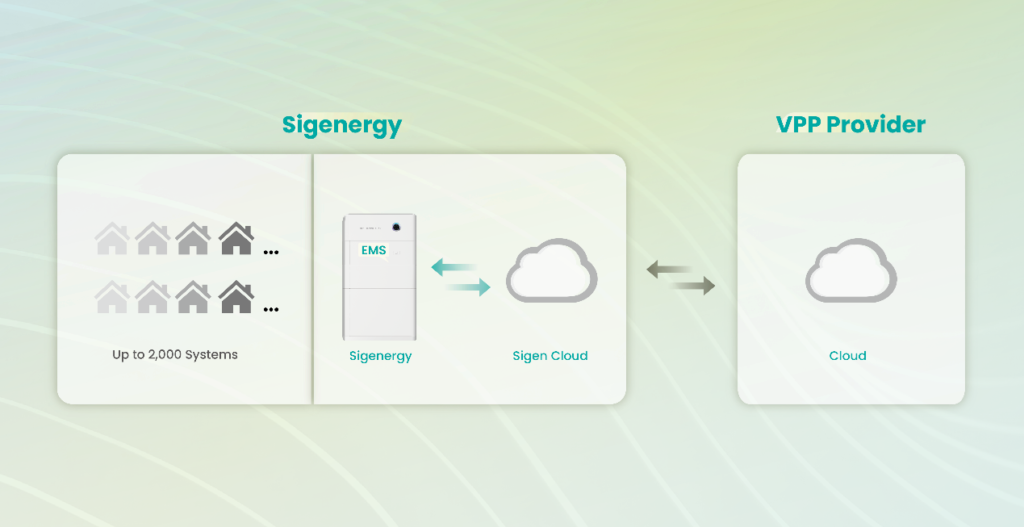
Joining the Sigenergy VPP programme and earning money
Sigenergy is currently expanding its efforts to support VPP services in more countries. In supported regions, simply signing an agreement with a VPP platform allows users to enjoy the additional revenue generated by VPP participation.
Using the mySigen app to access VPP functionality is incredibly convenient. After enabling VPP, customers can activate VPP services on the supported VPP platforms. Once the Sigen Cloud receives instructions from the VPP platform, it automatically switches modes according to the agreement. Users can view the connected VPP platforms on the mySigen app, experiencing seamless switching to VPP mode without any manual operation.

